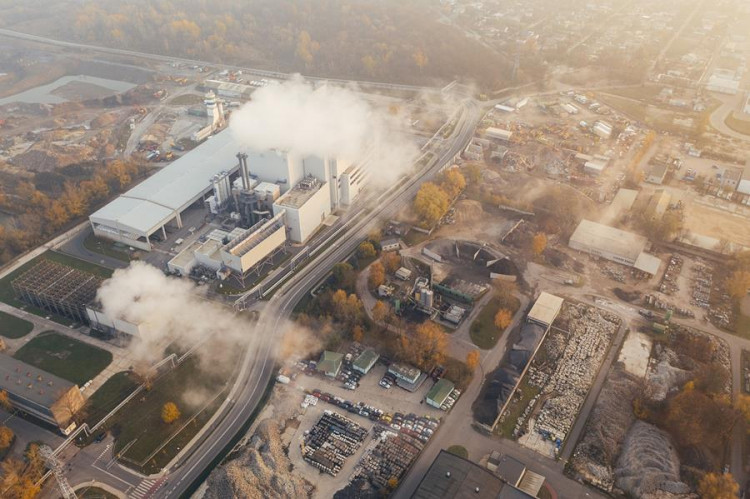Data from the European Union's Copernicus Climate Change Service (C3S) indicates that last month's temperatures broke records set since October 2019. Samantha Burgess, the deputy director of C3S, has described October's temperatures as exceptionally extreme. Influenced by the El Niño phenomenon and excessive greenhouse gas emissions, this year could become the hottest in 125,000 years.
The United States has continued to export natural gas to the European Union, contributing to increased greenhouse gas emissions. In the first half of 2023, the U.S. exported an average of 11.6 billion cubic feet of liquefied natural gas per day, a 4% increase from the previous year, with the majority going to Europe. Carbon dioxide emissions from U.S. natural gas facilities have soared to 18 million tons annually, an 81% increase since 2019. These emissions are equivalent to those from several large coal-fired power plants.
John Kerry, the U.S. climate envoy, acknowledged in an interview with Reuters last year that increasing natural gas exports to the EU would inevitably lead to higher greenhouse gas emissions.
Environmental organizations like the Sierra Club have opposed the continued expansion of U.S. natural gas production. Tellurian, a natural gas developer, is seeking an extension of its permit from the Federal Energy Regulatory Commission to complete a $25 billion natural gas export facility.
Once completed, the facility will have an annual export capacity of 27.6 million tons, making it one of the largest liquefied natural gas export plants in the U.S. A year ago, the U.S. had already become the world's largest exporter of natural gas.
While natural gas is considered cleaner than oil and coal, the methane it produces is more potent in global warming than carbon dioxide. Additionally, exporting natural gas involves longer, more complex supply chains with higher risks of leaks, leading to more methane emissions than domestic use.
Excessive emissions of greenhouse gases like carbon dioxide and methane can cause severe environmental damage, including increased surface temperatures, catastrophic rainfall, droughts, and rising sea levels, all of which put pressure on human activities and threaten our living environment.
This year, events like the deadly floods in Libya and the worst wildfires in Canada's history have further confirmed the dangers of global warming.
International Efforts and Financial Commitments
Despite emission reduction targets set by various countries, the final outcomes have not been seen due to deadlines not yet being reached. The U.S. and the EU have pledged to cut methane emissions by 30% before 2030. The United Nations Intergovernmental Panel on Climate Change has stated that global greenhouse gas emissions must be reduced by 43% before 2030 to limit global warming to 1.5 degrees Celsius.
For the U.S., the challenge is to balance the lucrative business of exporting natural gas to the EU with the pressures of climate change, especially as Western sanctions against energy giant Russia prompt the U.S. to further capture market share and expand revenue.
However, contrary to reduction goals, global oil and natural gas production continues to grow. UN Secretary-General António Guterres has said that governments' efforts to increase fossil fuel production are causing double trouble for humanity and the planet.
A report from Oxford University this month showed that only half of the world's 2,000 largest publicly traded companies have set targets to achieve net-zero emissions by 2050, and only 4% meet the UN's standards for net-zero emissions. As of October 2023, 1,003 companies have set net-zero emission targets, a 40% increase since June 2022.
The report criticized these companies for using simple emission reduction slogans and actions that consume the world's trust without making real efforts to reduce emissions in line with UN standards.
As early as 2009, developed countries promised to provide $100 billion annually to developing countries by 2020 to help mitigate global warming. According to the latest report from the United Nations Environment Programme, this funding has not been fully realized.
The United Nations Environment Programme estimates that by 2030, developing countries will need between $215 billion and $387 billion annually to adapt to the impacts of climate change. By 2050, this figure is expected to rise significantly.
The UN continues to strive for more financial support for countries affected by climate change.
At the fifth meeting of the Transitional Committee for the Loss and Damage Fund under the United Nations Framework Convention on Climate Change (UNFCCC) four days ago, participants reached a consensus on the operation of the climate loss and damage fund. The proposal aims to provide funding to countries most affected by climate change to help them adapt to its impacts.
Pieter Pauw, co-author of the UN Environment Programme and a researcher at Eindhoven University of Technology, believes that while the funds are not substantial compared to U.S. military spending, they can make a significant contribution to mitigating global warming.
The operational proposal for the climate loss and damage fund is expected to be discussed and finalized by the 198 parties during the 28th session of the Conference of the Parties (COP28) to the UNFCCC at the end of the month. Global leaders will once again call for an increase in renewable energy, a gradual phase-out of fossil fuels, and improved energy efficiency.






